Camera trapping has become a common research and monitoring tool used at many Nature Conservancy projects and preserves. Camera traps are a great tool for detecting rare or elusive species, and for documenting behaviors and habitat usage.
Not surprisingly, some Conservancy staff also have their own side projects in camera trapping. It’s an enjoyable pastime and, for many of us, we want to be observing nature even when we’re off the clock.
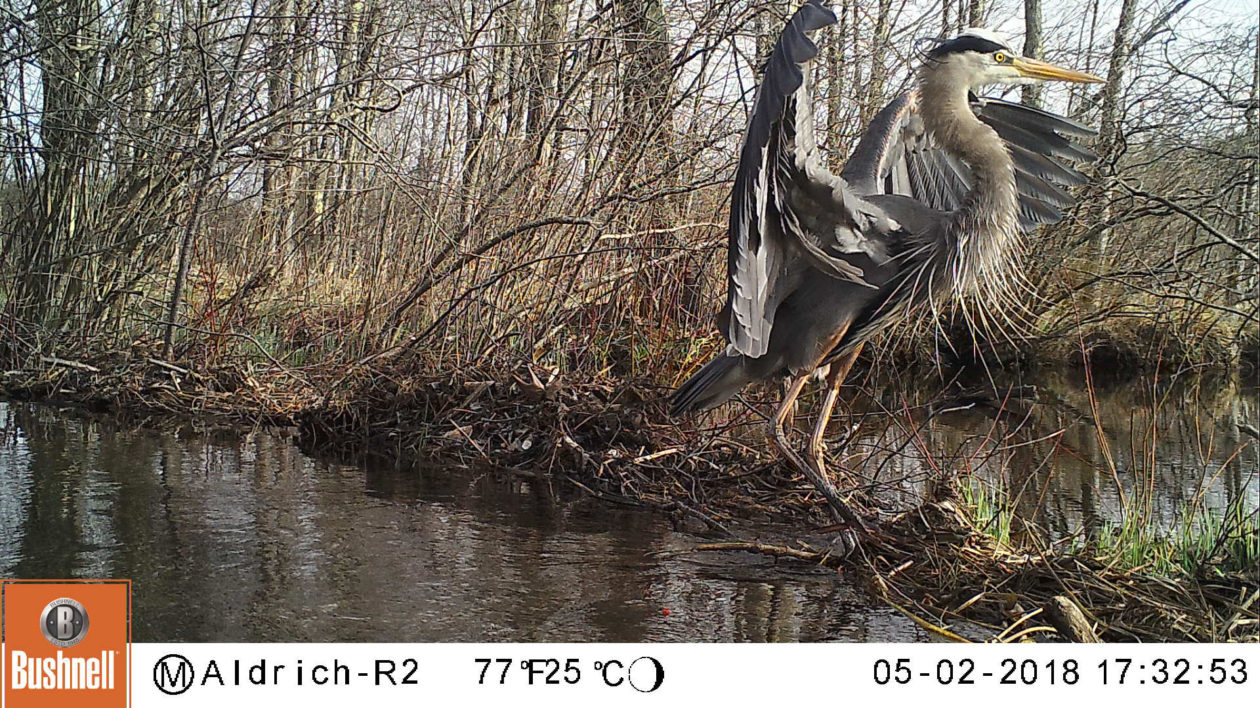
My colleague Eric Aldrich has taken this well beyond a hobby. Aldrich looks like he stepped out of a Jack London novel, and it’s not just an image: he’s been at home in the woods his entire life, whether tapping maple syrup, tracking wildlife or assisting in search and rescue efforts. Or camera trapping.

His camera trapping in New Hampshire has assisted several citizen science initiatives and inspires many online with the photos and video clips he’s captured. He shares his photos via the Hancock Wildlife Cam Facebook page, and many researchers are astounded at the behavior he has captured by photo and video.
“I’m not a scientist,” says Aldrich. “I’m someone who’s fascinated with wildlife, likes a good riddle and a good story. When you’re trying to decide how and where to place cameras, you’re working on a riddle. When you’re tracking an animal, you’re working on a riddle.”
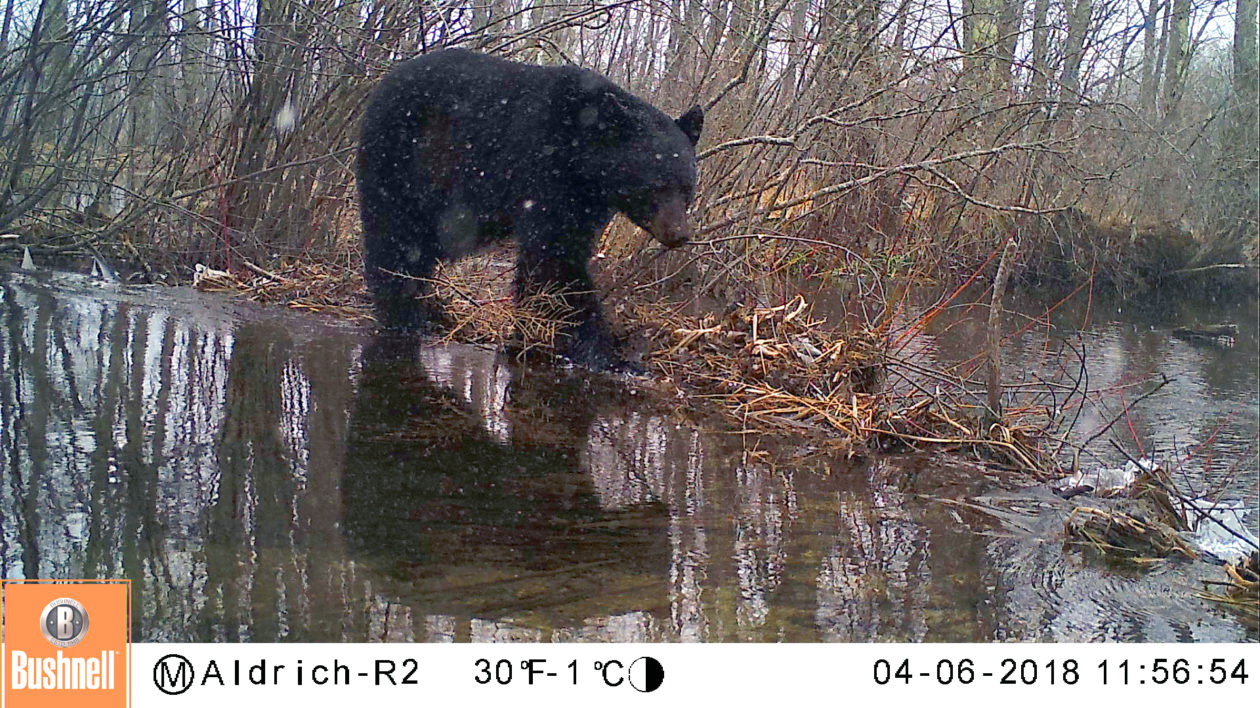
Aldrich, a lifelong naturalist and outdoor enthusiast, took up camera trapping near his home in Hancock – a community of about 1,600 people in southwestern New Hampshire – in 2008. The hills and mountains surrounding the town contained lands protected by the Harris Center for Conservation Education and other organizations.
He began by staking out carcasses, and drew in expected animals like coyotes and fishers, as well as some unusual ones like flying squirrels and chickadees. “Over time, I decided to meet wildlife on their own terms,” he says. “I stopped using carcasses. I learned the habitat and habits of the species I was seeking. I wanted to challenge my own skills.”

In particular, he sought to capture wildlife behavior that people wouldn’t normally see. In 2009, he started the Hancock Wildlife Cam Facebook page to share images. “Many folks are delighted to get a glimpse of what’s going on in the hills,” says Aldrich.
His camera traps target specific species, and he continues to use his knowledge of the animals for the photographs and video. He loves when he captures interesting behavior – like an otter catching and eating a fish.
As his skills progressed, he began participating in citizen science efforts for the University of New Hampshire and the U.S. Geological Survey. Many of his images have been captured on lands protected by the Harris Center for Conservation Education, a non-profit that is celebrating its 50th anniversary this year.
“Eric’s trail camera project gives us a chance to see what most people cannot,” says Susie Spikol, community programs director for the center. “It makes conservation real for our supporters and neighbors.”
The Harris Center has protected 26,000 acres in southwestern New Hampshire, with a focus on conserving contiguous acres to provide connectivity for wildlife. “We have always emphasized that we’re not just about protecting land, but connecting people to land,” says Spikol. “We have classroom and public education programs. We have offering for everyone from parents and babies to those in assisted living facilities. Eric’s love of public outreach fits right in. He is so good about sharing the wonders of New Hampshire via his trail camera images.”
Aldrich’s special interest is bobcats, a species he has tracked and photographed extensively. He has an ongoing independent research project with Dallas Huggins, focused on understanding bobcat behavior and habitat use.
“We set up the cameras in places where we have high confidence there will be bobcats present,” says Aldrich. “Tracking helps. We’ve gotten very good at predicting where bobcats will be.”
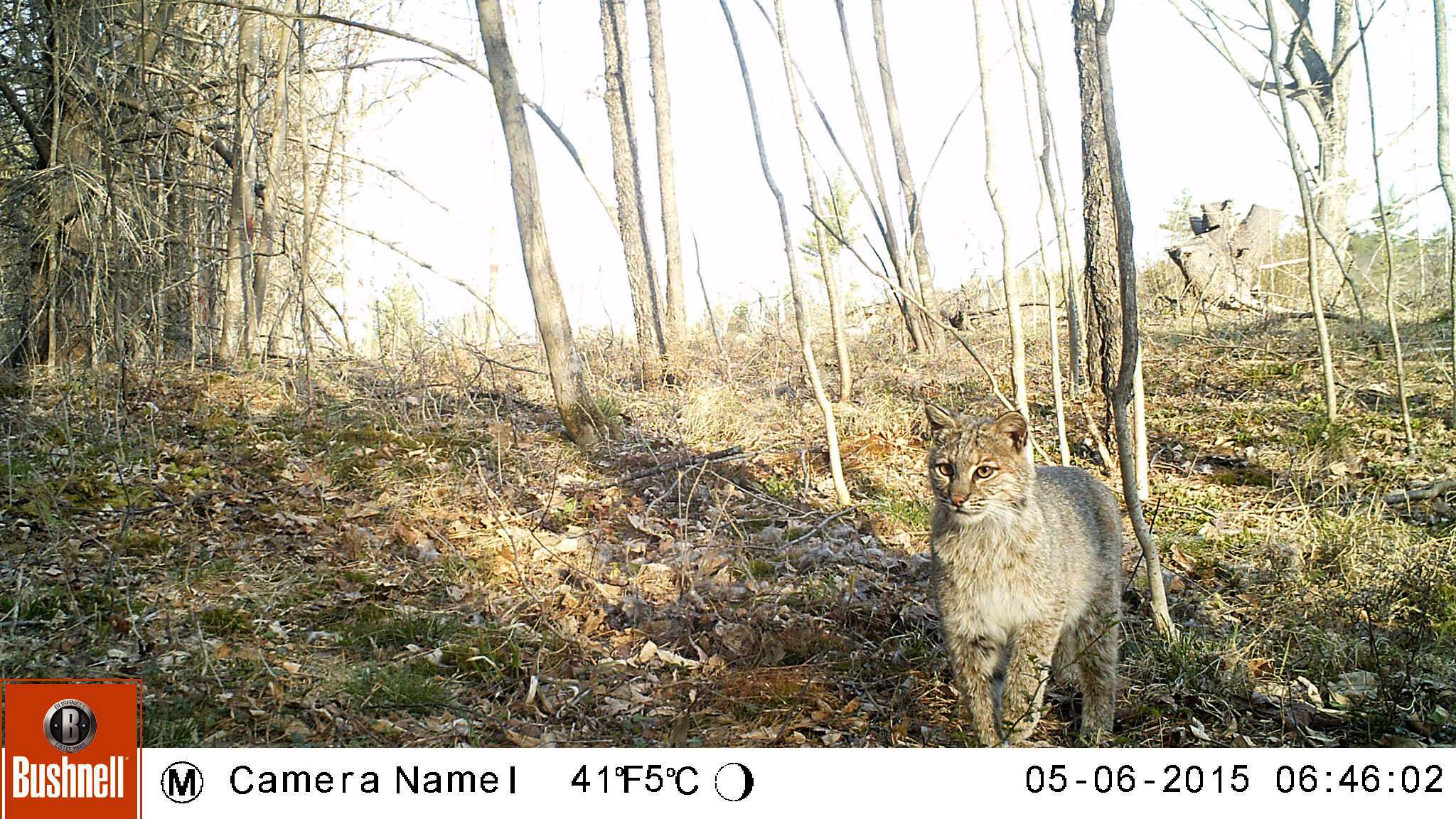
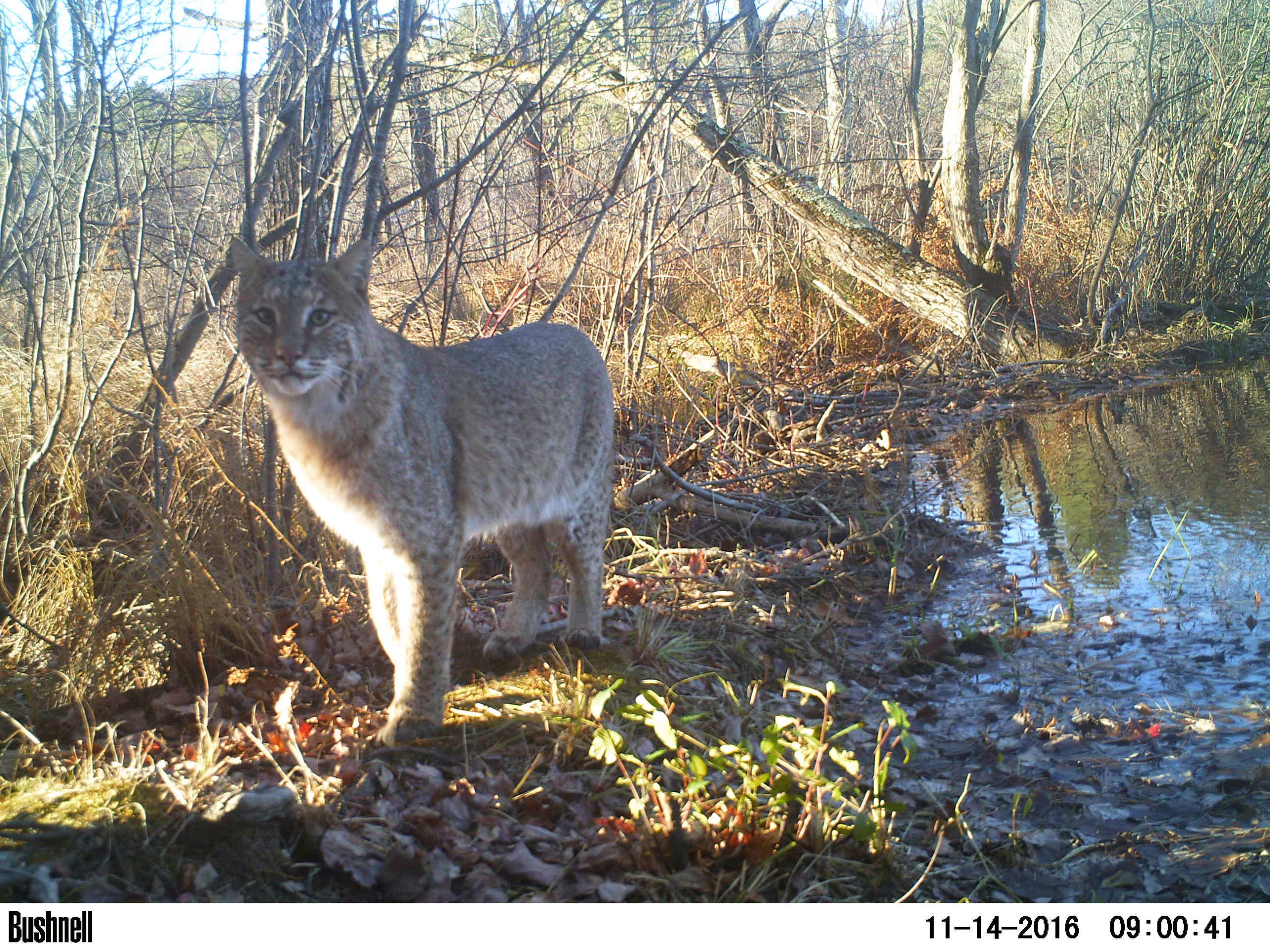
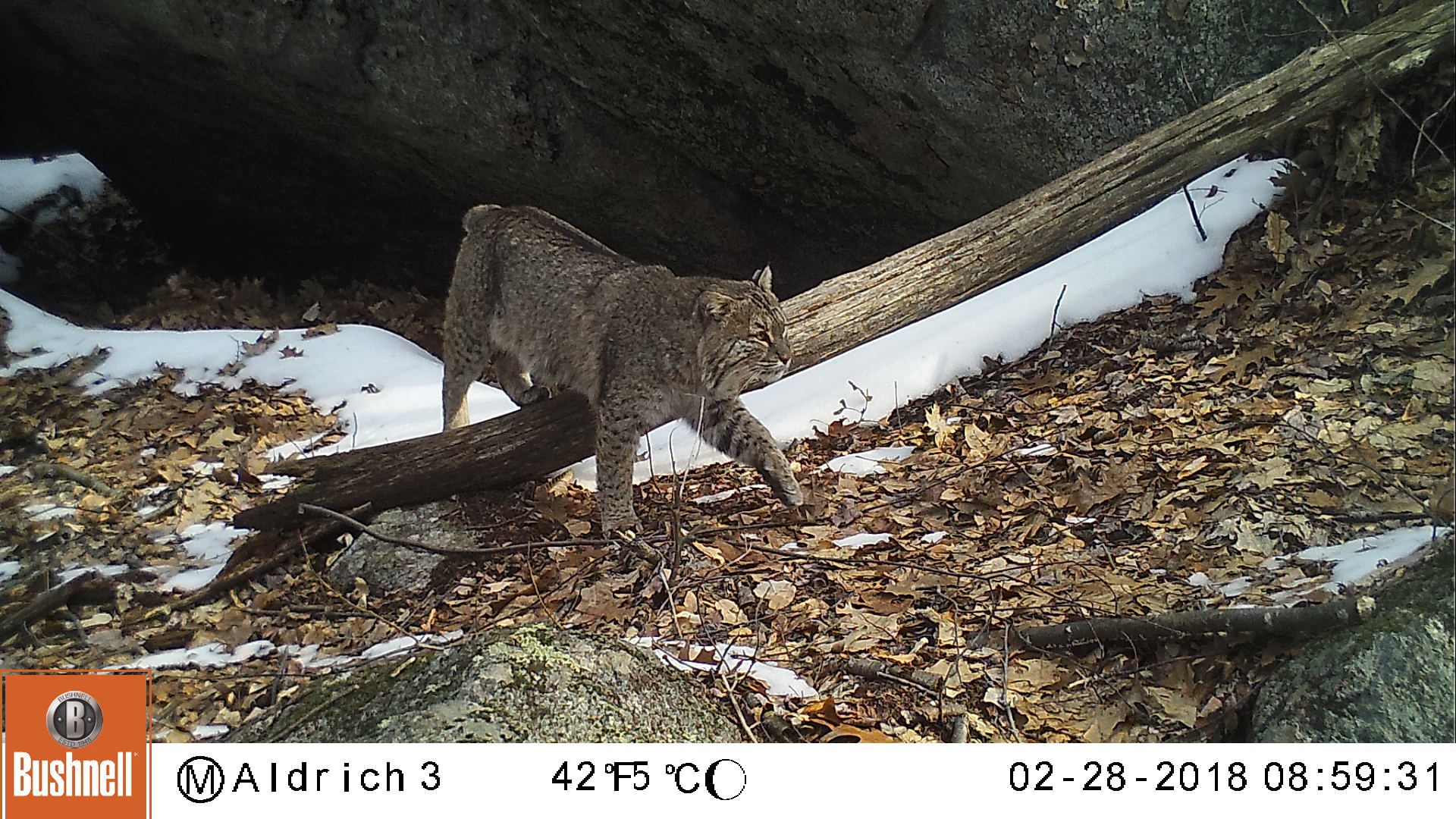
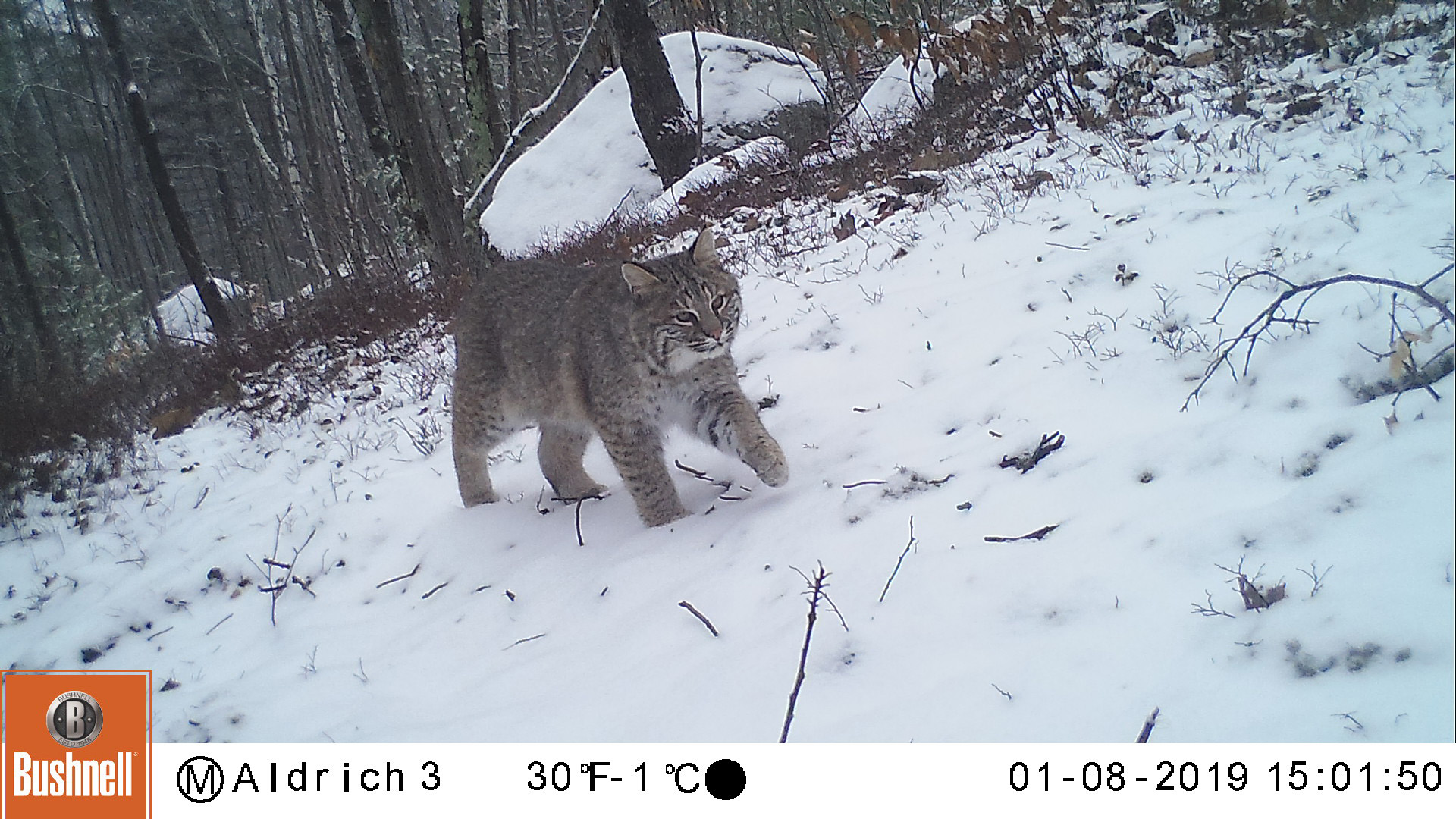
“I admit I was surprised at just how many bobcats are in this area, and how active they are,” says Spikol. “For our supporters, it is amazing to be able to see into their world. We think of them as such elusive cats, but now we have this window to see their behavior.”
Aldrich and Huggins have been working on identifying individual bobcats, which can be a challenge. One they have identified and photographed for several years they have dubbed Gimpy, as he has a noticeable limp.
“Despite an obvious injury, he still manages to get by,” says Aldrich. “He is able to catch prey and survive, and looks to be in relatively good condition.”
New Hampshire’s bobcat population rebounded when a hunting season ended in the 1980s. Now Aldrich not only finds the cats, but has video of them caterwauling, mating and exhibiting other behaviors.
Despite his love of camera trapping, Aldrich hopes people enjoy more than the pictures. “These photos and videos are just images,” he says. “They give a close-up view, but I want people to get out and see more.”
“The big picture is the habitat these creatures need,” he adds. “The big picture is how we’re treating the world we share with wildlife, whether it’s bobcats or black bears or flying squirrels. Wildlife reminds us of the natural order and that we’re part of it. We all have a role to play in protecting that.”
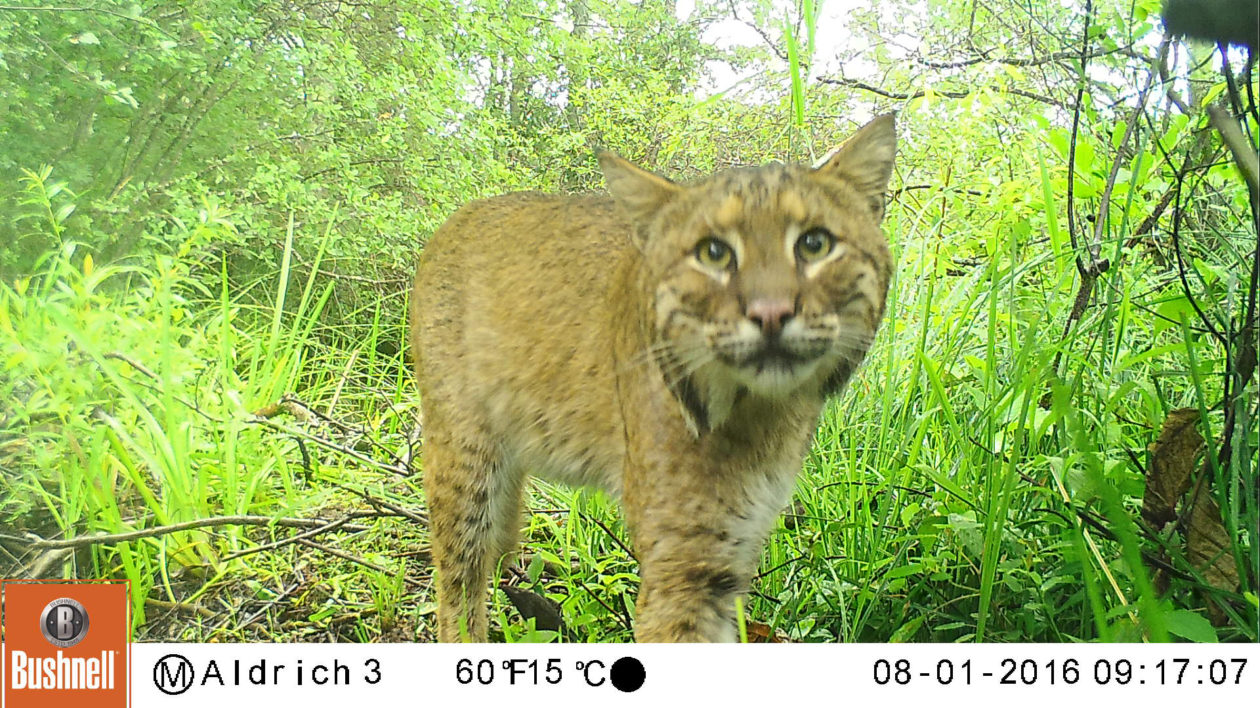
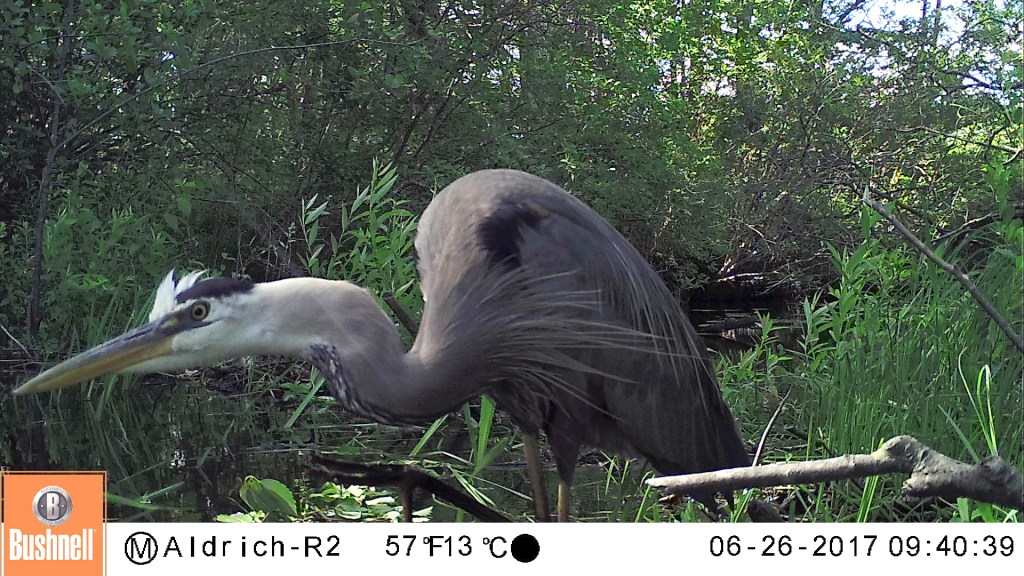



Great story and shots. Question: why was the otter stomping his back feet and wiggling his rump? What does that behaviour signify?
As a lifetime lover of the outdoors I have been fortunate to see cougars, bears, fishers and bobcats in their natural habitat up close and extremely close…and a number of times…without a camera and with my naked eye…
I liked the Big Cats and other wild animals.
Thanks very much,
Fabulous! Thank you for all your hard work.
Nice article and great trail camera captures!!
I grew up in Southwestern NH and though I hiked with friends I never seen a bobcat. Once on a BoyScout hike we walked past an older den, but until I moved to the California and was driving past the Youth Hostel nearly under the Golden ‘Gate Bridge I would wait. He/she stood erect and was looking for a rodent or mole perhaps. Thanks to Mr. Aldrich and the Hancock Conservancy!